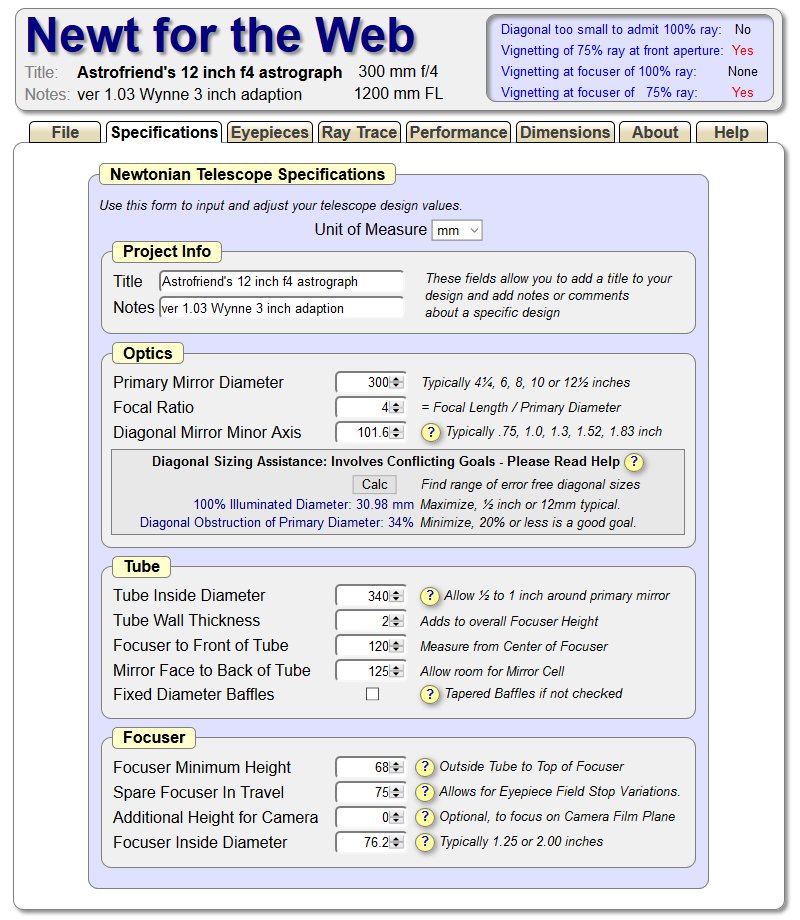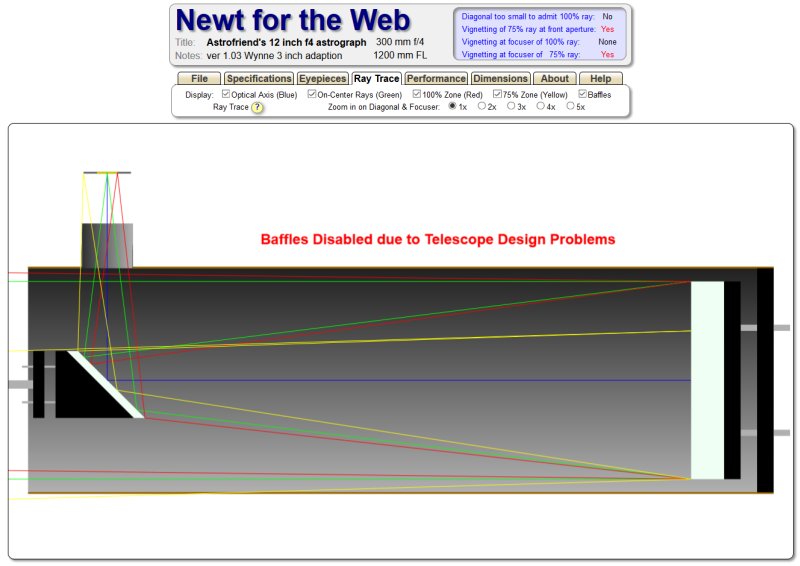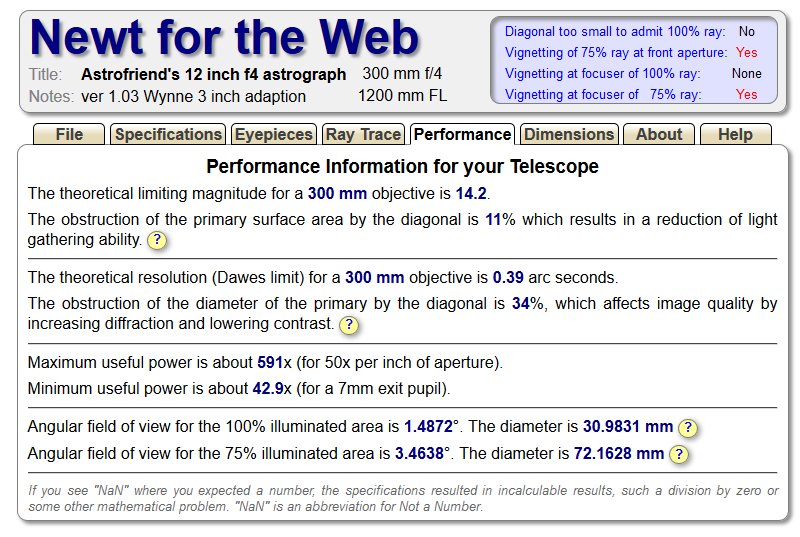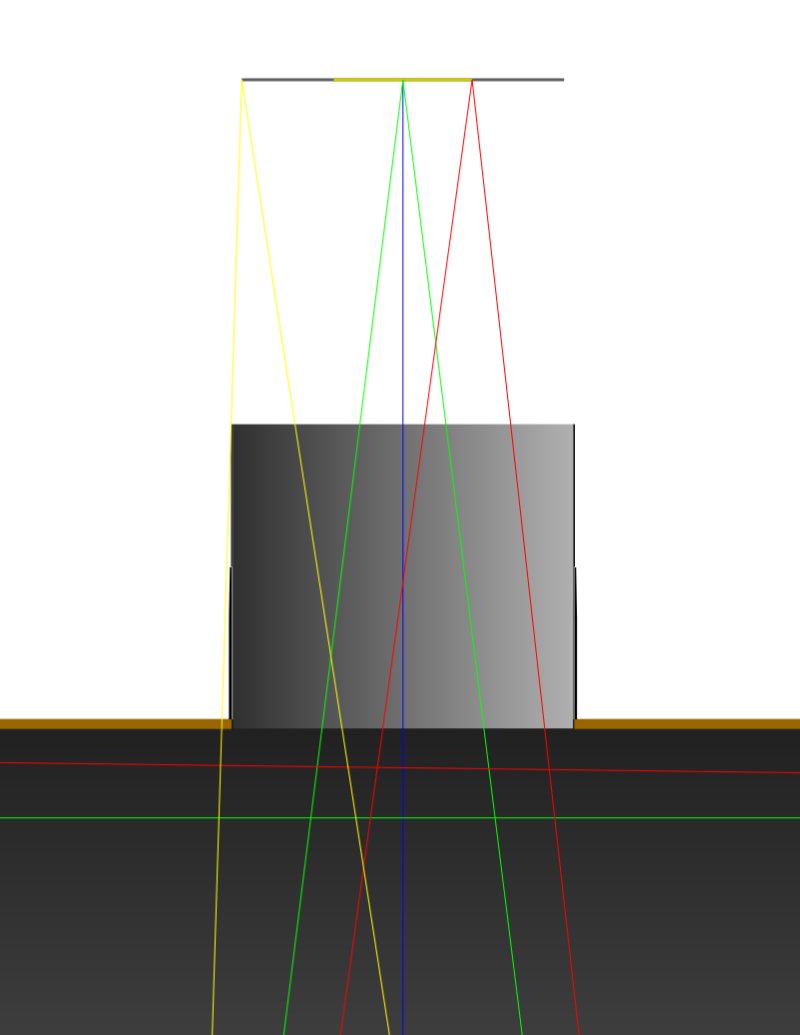|
Advertisement / Annons: |
My astronomy project:
|
Page:
Part: |
1: Optimize for a Wynne 3" coma correctorThis time I adapt the design of the Newton telescope to take a Wynne 3" coma corrector. What I have read this Wynne design makes a much better corrected field at the edges. There is also a big drawback when placed in a Newton reflector, the lens packet is much longer compare to normal designed coma correctors. Don't forget I'm new to this and do mistakes! The Wynne corrector I test here is a special design which has a shorter built length. But still very long, will it work?.
We don't want the coma corrector to protrude inside the telescope tube. 
I have let the secondary mirror be of the same size as earlier. Because of the increased length of the coma corrector lens packet I have let it protrude 20 mm inside the telescope tube, not good. 
Here is the ray trace, as you see is the inlet in the focuser narrow and it will protrude 20 mm inside the telescope tube to make it even worse. The inlet lens in the coma corrector must of course be smaller then the inside diameter of the focuser, maybe at maximum 67 mm lens diameter, this Wynne corrector has a 69 mm lens, but you can't use the whole diameter of it, at least I don't think it's the effective diameter. 
The performance page say that the 100% illuminated area will have a diameter of only 31 mm, but I shall have a full frame sensor and that has a diagonal size of 44 mm. We will still get the sensor illuminated but with more vignetting. The size of the secondary mirror is 34% of the primary mirror. Not good but it can't be very much smaller without we get serious problem with the vignetting.
|
2: Zoom in ray trace at focuser
A look the ray trace around the focuser show that this will not work without vignetting. There is some space around the red ray, but remember this coma corrector now protrude 20 mm inside the telescope tube, then the lens in the coma corrector will be to small to fit the red edge ray. The illuminated diameter in this ray trace is only 31 mm, I need 44 mm. We must have a part of the ray outside the 100% field, maybe not the 75% ray, more like 80% to 85% I guess. That make consequences and we must increase the telescope tube inside diameter, then we have to move the focus point even farther away from secondary mirror, more problem! Here is the new design file if you want to do some test by your self:
Newt-Web design page:
Conclusion: An alternative could be to skip the secondary mirror and mount both camera and coma corrector inside the telescope. With a cylinder shaped camera it will work in a big telescope like this.
But then new problem arise: Now I have found some information on how to design a Wynne corrector from standard lenses and it also say that the inlet lens should be far away from the focus. Could it be possible to place the first lens before the secondary mirror and the other two in the focus end? If I get time I will test the design tool OSLO and see if I can get some interesting result.
I do this mostly because it's interesting and give me more knowledge, no plans to build my own coma corrector.
|
| Go Back |